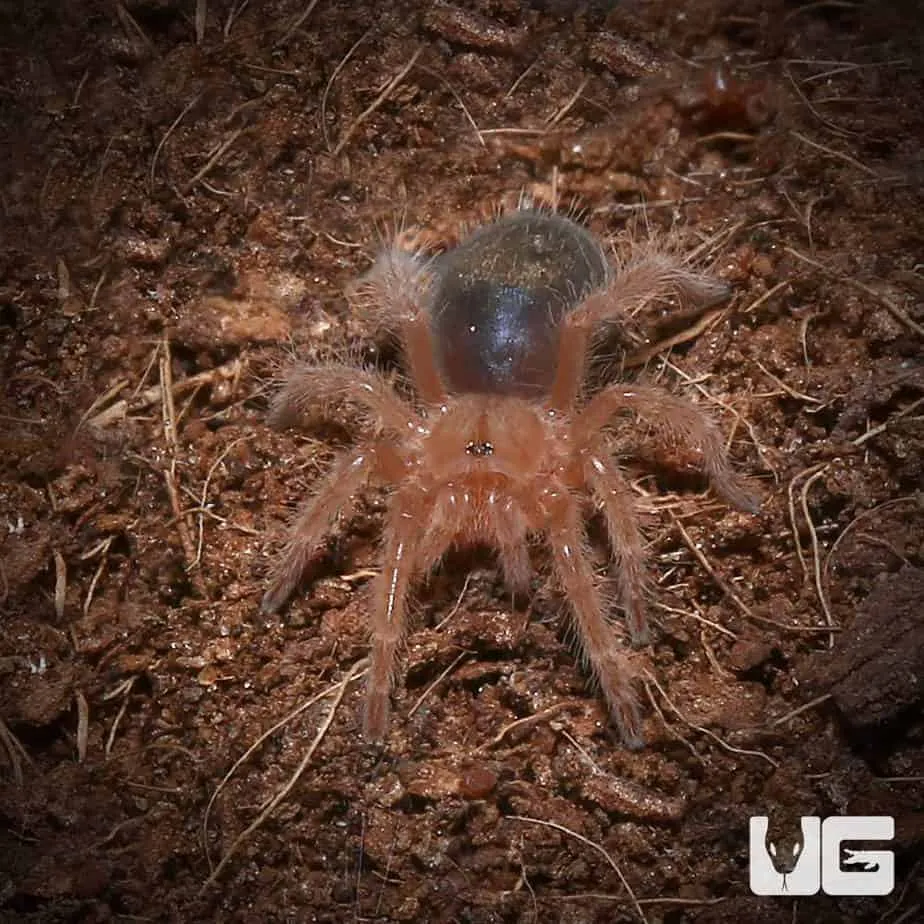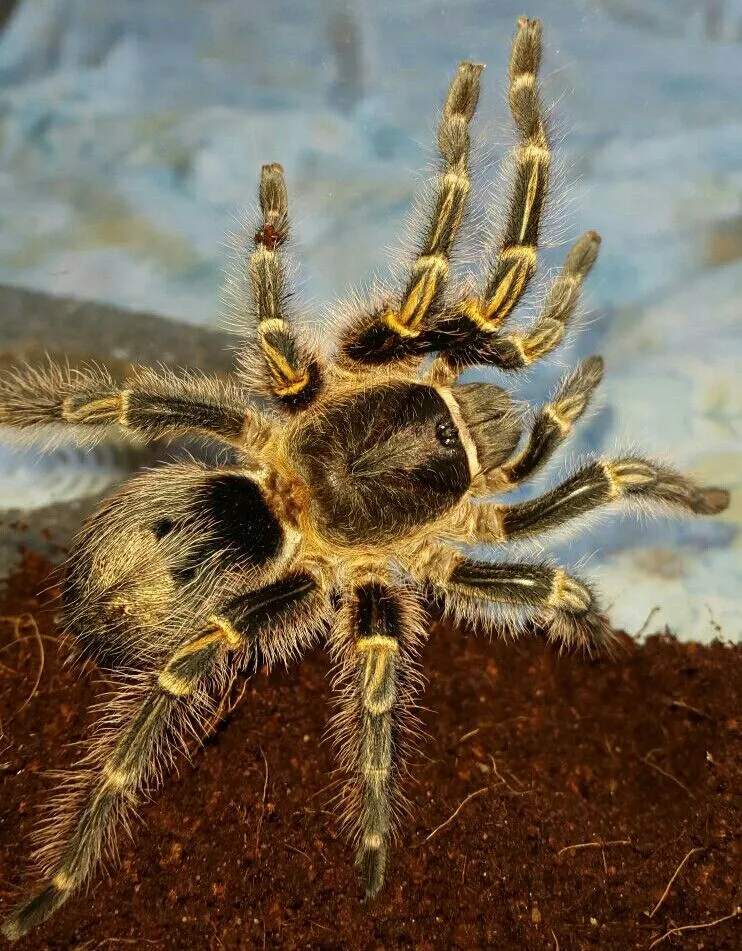What is the Chaco Golden Knee Tarantula?
The Chaco Golden Knee Tarantula (Grammostola pulchripes), a captivating arachnid, hails from the grasslands of Argentina and Paraguay. Known for its docile temperament and striking appearance, this tarantula has become a popular pet among both novice and experienced enthusiasts. Its name derives from the golden hues adorning its leg joints, providing a beautiful contrast against its dark body. These spiders are relatively hardy and adapt well to captivity, making them a great choice for those looking for an interesting and relatively low-maintenance pet. Their impressive size and calm demeanor further contribute to their appeal, solidifying their place as a favorite in the tarantula-keeping community. The Chaco Golden Knee’s lifespan, typically 15 to 20 years for females, adds to their appeal, offering a long-term companionship for responsible keepers.
Understanding the Size of a Chaco Golden Knee Tarantula
Understanding the size of a Chaco Golden Knee Tarantula is essential for providing appropriate housing and care. The size of these tarantulas can vary depending on factors such as age, sex, and environmental conditions. They are one of the larger species of tarantulas commonly kept as pets, growing steadily throughout their lives. Measuring their size typically involves assessing both their leg span and body length, providing a comprehensive understanding of their overall dimensions. Proper knowledge of these measurements is vital for creating a suitable habitat that allows the tarantula to thrive, ensuring they have enough space to move, molt, and hunt. The Chaco Golden Knee’s substantial size contributes to its impressive presence, making it a fascinating creature to observe and care for.
Leg Span Measurements

The leg span of a Chaco Golden Knee Tarantula is a key measurement for assessing its size and maturity. This is measured from the tip of one leg, stretched out, to the tip of the opposite leg, across the widest point. Adult females typically boast a leg span ranging from 6 to 8 inches (15 to 20 cm), showcasing their impressive size. Males are often slightly smaller, with a leg span generally a bit less. The leg span is a crucial factor in determining the suitable size of their enclosure, as the tarantula needs ample space to move around comfortably and to molt successfully. Observing the leg span provides valuable insights into the tarantula’s overall health and development, making it an essential aspect of responsible pet ownership. A healthy leg span indicates proper growth and well-being, reflecting the quality of care provided.
Body Length Measurements
In addition to leg span, the body length of a Chaco Golden Knee Tarantula offers another important size metric. This measurement refers to the length of the spider’s cephalothorax (the combined head and chest) and abdomen. Adult females usually have a body length of about 2.5 to 3 inches (6 to 7.5 cm), while males are often a bit smaller. Accurate body length measurements are useful for comparing growth stages and monitoring overall health. These measurements are essential when selecting an enclosure and determining appropriate feeding sizes. Observing the body length, along with other factors, helps keepers ensure the tarantula is growing well and thriving in its environment. By monitoring body length, one can more readily identify potential health issues and make necessary adjustments to care practices.
Factors Affecting Size
Several factors influence the ultimate size of a Chaco Golden Knee Tarantula. Genetics play a fundamental role, as some individuals naturally grow larger than others. Proper nutrition is crucial; a balanced diet consisting of appropriately sized insects and other invertebrates supports healthy growth. Environmental conditions, particularly temperature and humidity, also affect development, with optimal levels promoting better growth rates. Regular molting is essential for growth, and the frequency of molting can be influenced by factors such as feeding and environmental conditions. Overall, a combination of genetics, proper care, and suitable environmental conditions contribute to the impressive size of these beautiful tarantulas. Providing the best possible environment maximizes the likelihood of the tarantula reaching its full potential size and living a long, healthy life.
Genetics and Breeding

The genetic makeup of a Chaco Golden Knee Tarantula has a significant impact on its size and overall characteristics. Breeding practices, the lineage, and the genetic diversity within a population influence the size potential of individual tarantulas. Selective breeding can sometimes produce larger specimens, while inbreeding can lead to health issues and affect size negatively. Reputable breeders often prioritize healthy genetics to ensure their tarantulas thrive. When acquiring a Chaco Golden Knee, understanding its genetic background can provide insights into its potential size and development. The genetic contribution to size underscores the importance of responsible breeding practices and the role that genetics play in the well-being and characteristics of these fascinating creatures.
Nutrition and Diet
Nutrition is a critical factor determining the size of a Chaco Golden Knee Tarantula. A diet that consists of appropriately sized insects, such as crickets, roaches, and mealworms, supports healthy growth and development. The frequency of feeding should be adjusted according to the tarantula’s age and stage of development, with juveniles needing more frequent meals than adults. Providing a balanced diet rich in essential nutrients is vital for proper molting and overall health. Overfeeding can lead to obesity, which can impact the tarantula’s size and health, while underfeeding can stunt growth. Proper hydration is also essential, and fresh water should always be available. Responsible feeding practices are crucial for ensuring that these amazing creatures reach their full size potential and live long, healthy lives. A well-nourished tarantula is a healthy tarantula.
Growth Stages
Chaco Golden Knee Tarantulas go through various growth stages, each characterized by changes in size and appearance. Spiderlings, the smallest stage, undergo rapid growth and molting, increasing in size with each molt. As they mature, the frequency of molting decreases. Juveniles continue to grow steadily, eventually reaching adulthood. The rate of growth and the frequency of molting are influenced by factors like feeding, temperature, and humidity. Understanding these growth stages is essential for providing the appropriate care and adjusting feeding schedules accordingly. Keeping track of these stages also helps monitor the overall health of the tarantula. The growth stages highlight the dynamic nature of these spiders, making them fascinating creatures to observe from their juvenile phases to their adult forms.
Molting Process and Its Impact

Molting is a critical process for Chaco Golden Knee Tarantulas, enabling them to grow and shed their old exoskeleton. During molting, the tarantula sheds its outer layer, revealing a new, larger exoskeleton beneath. This process allows the tarantula to increase in size and also replace damaged limbs or body parts. The frequency of molting decreases as the tarantula ages. Proper environmental conditions, such as appropriate humidity levels, are vital for successful molting. Stress and disruptions can make molting difficult, potentially leading to health issues. Understanding the molting process and providing optimal conditions is crucial for ensuring the tarantula’s well-being and continued growth. The molting process is a remarkable display of adaptation and a key part of their life cycle.
Comparing Chaco Golden Knee Tarantula Size
Vs other Tarantula Species
When comparing the size of Chaco Golden Knee Tarantulas to other tarantula species, they fall into the category of medium to large tarantulas. Their size is comparable to other popular pet tarantulas like the Brazilian Black or the Pink Zebra Beauty. However, they are not as large as some of the giant tarantulas, such as the Goliath Birdeater (Theraphosa blondi). The size differences between species provide insight into their habitats, dietary needs, and overall care requirements. The Chaco Golden Knee’s size makes it a manageable pet, still impressive, and accessible to many enthusiasts. Comparing their size to other species helps put their dimensions in perspective, revealing how they fit within the diverse world of tarantulas. This comparison aids in appreciating the variety in the tarantula family.
Female vs Male Size Differences

In general, female Chaco Golden Knee Tarantulas tend to be larger than males. This is a common characteristic among many tarantula species, and it reflects differences in their life cycles and reproductive strategies. Female tarantulas are typically the larger sex, and they have longer lifespans, allowing them to continue growing over a more extended period. Male Chaco Golden Knees, on the other hand, reach sexual maturity and often stop growing as rapidly, with their primary focus shifting to reproduction. This size difference is usually noticeable once the tarantulas reach adulthood. Understanding these sex-based size differences helps keepers provide appropriate care, including the appropriate housing and dietary considerations needed. Observing size differences can be an indicator to help determine the sex of the tarantula, though other methods are typically used.
Conclusion
Understanding the size of a Chaco Golden Knee Tarantula is fundamental for providing excellent care and creating a suitable environment. From leg span and body length to the factors that influence growth, a thorough knowledge of their dimensions supports responsible pet ownership. These fascinating spiders vary in size, with females generally being larger than males. Providing the right habitat, nutrition, and environmental conditions allows these tarantulas to thrive. Appreciating their size and understanding the nuances of their growth is a key aspect of enjoying these amazing creatures. By focusing on the Chaco Golden Knee Tarantula’s size, enthusiasts can foster their well-being, ensuring a healthy and fulfilling life for these beautiful arachnids. Their size is a significant part of their character, making them rewarding pets for many.
